Professional industry ceramic supplier, silicon nitride, silicon carbide, aluminum nitride and any other kinds of ceramics.
PRODUCT PARAMETERS
Description
Overview of Silicon Carbide Plate Sic Ceramic Wafer for Industry Use
Silicon Carbide Plate Sic Ceramic Wafer for Industry Use ceramics are a class of ultra-high-performance materials known for their exceptional thermal conductivity, outstanding mechanical properties, and superior chemical stability. They excel in the most demanding environments involving extreme temperatures, wear, and corrosive agents. This combination of properties makes SiC ceramics indispensable for advanced applications in aerospace, energy, automotive, and industrial processing.
Features of Silicon Carbide Plate Sic Ceramic Wafer for Industry Use
-
Exceptional Thermal Conductivity: Facilitates excellent heat dissipation, outperforming many metals and most other ceramics.
-
High-Temperature Strength: Maintains remarkable mechanical strength and creep resistance at temperatures up to 1650°C.
-
Superior Wear & Abrasion Resistance: Offers extreme hardness, making it ideal for wear-prone components like seals, nozzles, and liners.
-
Excellent Chemical Inertness: Highly resistant to oxidation and attack by acids, alkalis, and molten metals.
-
High Thermal Shock Resistance: Withstands rapid temperature changes without cracking or degrading.
-
Semiconductor Properties: Used extensively in high-power, high-frequency electronic devices.
Specification of Silicon Carbide Plate Sic Ceramic Wafer for Industry Use
This silicon carbide plate is a top choice for tough industrial jobs. It handles extreme heat well. Temperatures over 1600°C are no problem. Sudden temperature changes won’t crack it either. This makes it super reliable in hot places.
The plate is very hard. It resists wear and scratches effectively. It lasts longer than many other materials. This hardness saves money over time. You replace parts less often.
It won’t react with most chemicals. Acids, alkalis, harsh substances – it stays stable. This chemical resistance is vital in corrosive settings. The plate keeps its shape and strength.
Thermal conductivity is another key feature. It moves heat away quickly and evenly. This prevents hot spots. Uniform heating or cooling happens easily. Processes run more consistently.
The surface is smooth and flat. Precision machining achieves this. Tight tolerances are standard. It fits perfectly into industrial equipment. You get a secure, stable fit every time.
Common sizes are available. Thicknesses range from about 5mm to 50mm. Diameters often go up to 500mm or more. Custom sizes are possible too. We can match your specific needs.
You find these plates in furnaces, kilns, and reactors. Semiconductor manufacturing uses them heavily. They are essential for wafer handling. High-temperature testing relies on them. Anywhere heat, wear, or chemicals are issues, this plate performs.
It provides a stable, durable platform. Performance stays high under stress. Downtime decreases significantly. Operating costs often go down. This ceramic solution works where others fail.
Applications of Silicon Carbide Plate Sic Ceramic Wafer for Industry Use
Silicon carbide plates and ceramic wafers solve tough problems in demanding industries. This material is incredibly hard. It resists wear exceptionally well. This toughness makes it perfect for parts facing constant friction or impact. Mining equipment uses SiC plates as liners. They protect machinery from abrasive materials. Pump seals made from SiC last much longer than other materials. They handle gritty fluids reliably.
Heat management is another major strength. Silicon carbide handles extreme temperatures easily. It doesn’t warp or crack under sudden heat changes. Semiconductor manufacturing relies on SiC wafers. They hold silicon wafers during high-temperature processes. The SiC stays stable and clean. Furnace operations use large SiC plates. These plates support products inside kilns or furnaces. They withstand intense heat cycle after cycle. Burner nozzles made from SiC deliver fuel efficiently. They survive the hottest flames without degrading.
Chemical resistance is critical in many settings. SiC ceramic offers excellent protection. It fights off strong acids, strong alkalis, and molten salts. This property is vital for chemical processing plants. SiC components line reactors and handle corrosive fluids. They prevent contamination and maintain purity. Semiconductor processing needs ultra-clean environments. SiC wafers and fixtures contribute to this. They release minimal particles and resist chemical etchants.
Durability translates directly into cost savings. SiC parts last significantly longer than metal or standard ceramic alternatives. This reduces downtime for maintenance. It lowers the total cost of ownership over time. Industries value reliability. Silicon carbide delivers consistent performance under pressure. It handles harsh conditions where other materials quickly fail.
Company Profile
Tanki New Materials Co.Ltd. focus on the research and development, production and sales of ceramic products, serving the electronics, ceramics, chemical and other industries. Since its establishment in 2015, the company has been committed to providing customers with the best products and services, and has become a leader in the industry through continuous technological innovation and strict quality management.
Our products includes but not limited to Aerogel, Aluminum Nitride, Aluminum Oxide, Boron Carbide, Boron Nitride, Ceramic Crucible, Ceramic Fiber, Quartz Product, Refractory Material, Silicon Carbide, Silicon Nitride, ect. please feel free to contact us.

Payment Methods
T/T, Western Union, Paypal, Credit Card etc.
Shipment Methods
By air, by sea, by express, as customers request.
5 FAQs of Silicon Carbide Plate Sic Ceramic Wafer for Industry Use
What are silicon carbide plates used for?
These plates handle extreme heat and wear. Factories use them in semiconductor tools, furnace parts, and high-temperature fixtures. They work well as wafer carriers, heat exchanger plates, and kiln furniture. Their strength and heat tolerance make them reliable.
How hot can SiC plates safely get?
SiC plates manage very high temperatures. In normal air, they resist up to 1650°C. Inside special furnaces with no oxygen, they withstand even higher heat. Few materials last this long under such intense conditions.
Why pick SiC over other ceramics like alumina?
SiC beats alumina in key ways. It moves heat much faster. It resists sudden temperature shocks better. SiC is also harder and stronger. This toughness means SiC parts last longer in rough industrial jobs. It saves money over time.
Can SiC plates handle strong chemicals?
Yes. SiC resists most acids and alkalis. It doesn’t corrode easily. Factories use it with harsh chemicals in etching baths or reactors. It stays stable where metals or other ceramics fail. This chemical toughness is a big plus.
Is SiC brittle? How do we handle it?
SiC is hard but can break if hit hard. Workers must be careful. Avoid dropping it. Use padded tools during setup. Support it fully during use to prevent bending stress. Proper handling prevents cracks and chips.
REQUEST A QUOTE
RELATED PRODUCTS
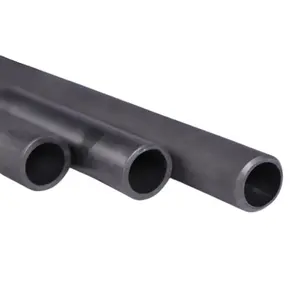
Silicon Carbide Ceramic Tube Wear Resistant Sic Tube/Beam/ Pipe for Industry High Temperature Kilns
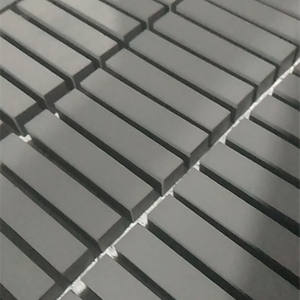
High Grade G5 G10 G16 G20 G25 Sic Silicon Carbide Ceramic Ball 6.000mm for Bearing and Walve
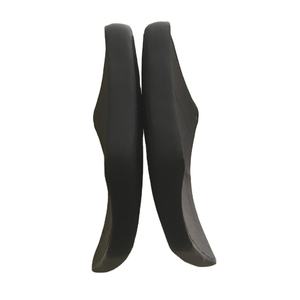
Super High Hardness Insulating Component Silicon Carbide Ceramic
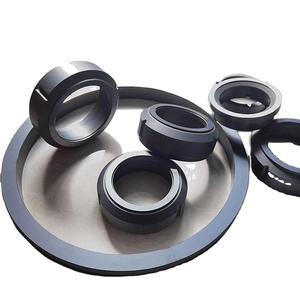
Refractory Crucibles 1380c Reaction Bonded Silicon Carbide Sic Ceramic Sic Saggars Saggers
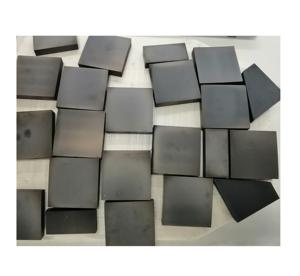
Alumina Ceramic Rod Pressure Free Sintered Silicon Carbide Ceramic Shaft Customized



